Tran Quoc Pagoda: How to explore the cultural symbol of Vietnamese Buddhism

Known as the Buddhist center of Thang Long citadel during the Ly and Tran dynasties with historical and architectural values, Tran Quoc Pagoda attracts many Buddhists, visitors, and both domestic and international tourists. In 2016, the Daily Mail (UK) listed Tran Quoc, the oldest temple in Hanoi at over 1,500 years old, in Top 16 most beautiful temples in the world. Tran Quoc pagoda is a must-see destination when visiting Hanoi.
History of Tran Quoc Pagoda
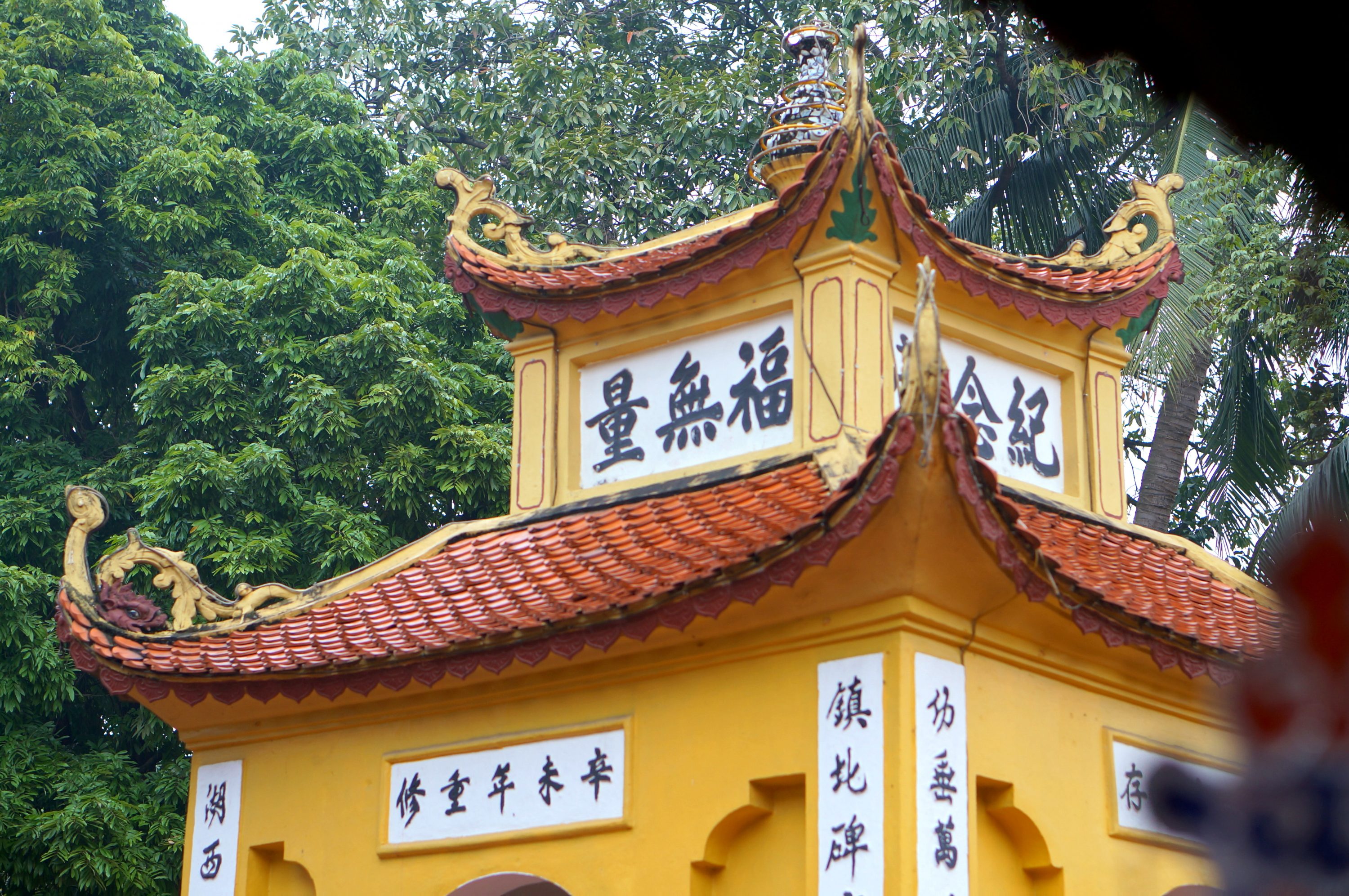
The pagoda was built during the reign of Ly Nam Đe (541 - 547), and first beared the name “Khai Quốc”(開国 meaning “to start to build the country”) . The pagoda was erected in the Yen Hoa village (nowadays renamed Yen Phu) on the Red River’s bank.- During the reign of Le Thai Tong (1440 - 1442), it was referred to as An Quoc Pagoda. (安国 meaning “to keep the peace in the country”)- By the reign of Le Kinh Tong (1600 - 1618), the pagoda was relocated to a small island in West Lake (Kim Ngu, or Goldfish Island) due to erosion of the river bank, and remains located there today. The Ly kings built the Thuy Hoa palace and the Tran kings built the Han Nguyen temple to use as a place to relax and watch fishing boat races.- During the reign of Le Hy Tong (1680 - 1705), the pagoda was renamed once more, as Tran Quoc (鎭國 meaning “to guard the country”)- During the reign of Le Than Tong (1619 - 1643), people in Yen Phu and Yen Quang villages built Co Ngu dam (today known as Thanh Nien street) across the West Lake (now Truc Bach lake) and constructed a road from the Ngoc Ngu dam to the pagoda. The temple was renovated in 1624 and 1628. By 1639, the backstage, the gates, the corridors on the left and right were built with a large scale and subtle carvings.
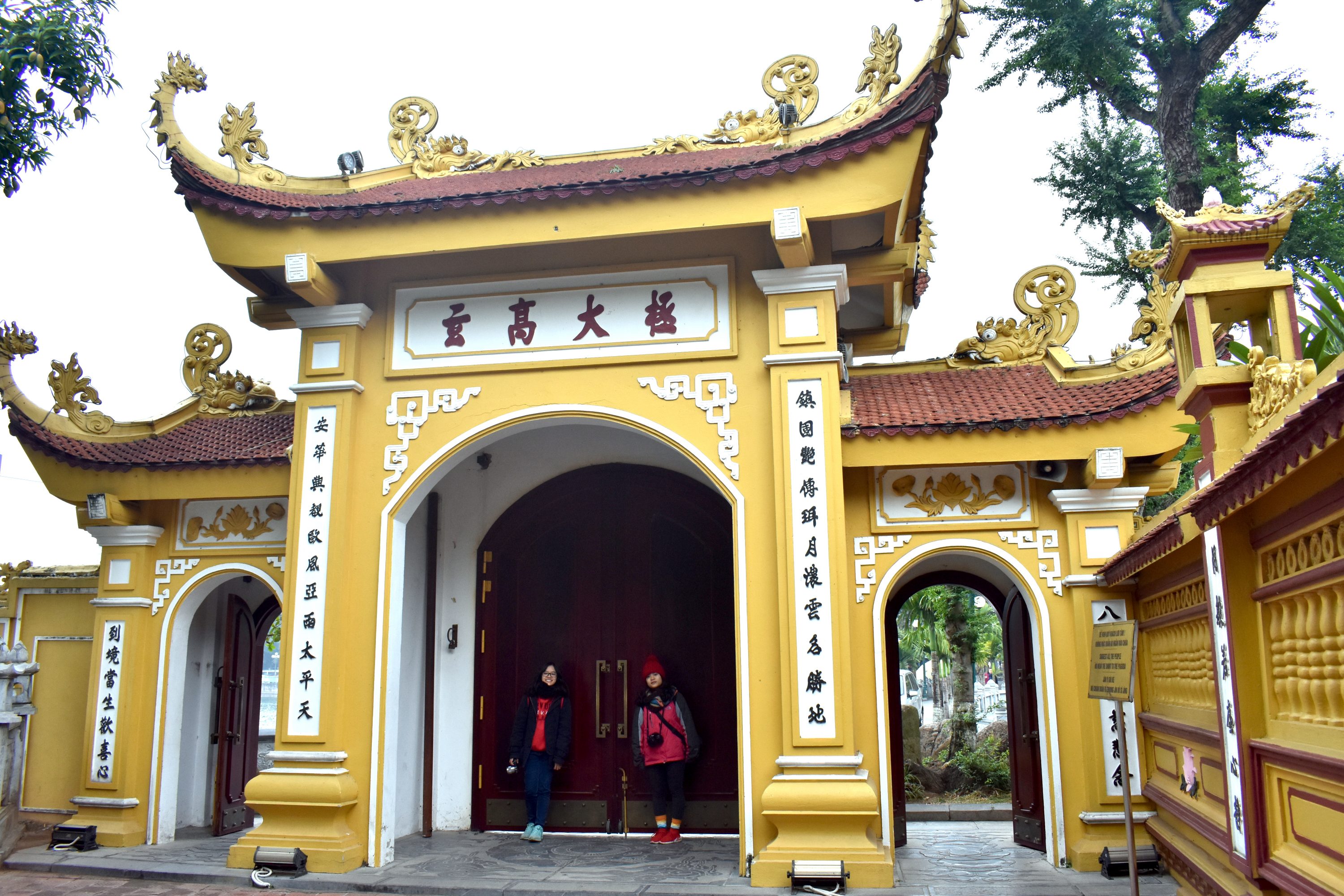
- During the reign of Gia Long 14 (1815), a new bell and statue were added to the Tran Quoc pagoda for worship.- In 1821 King Minh Mang traveled to Bac Thanh to visit the pagoda, donating 20 tael of silver to the repair and maintenance of the site.- In 1842 King Thieu Tri also visited the pagoda, and renamed the temple Tran Bac (鎭北 meaning “to guard the North). However, it’s still more widely known as Tran Quoc Pagoda.
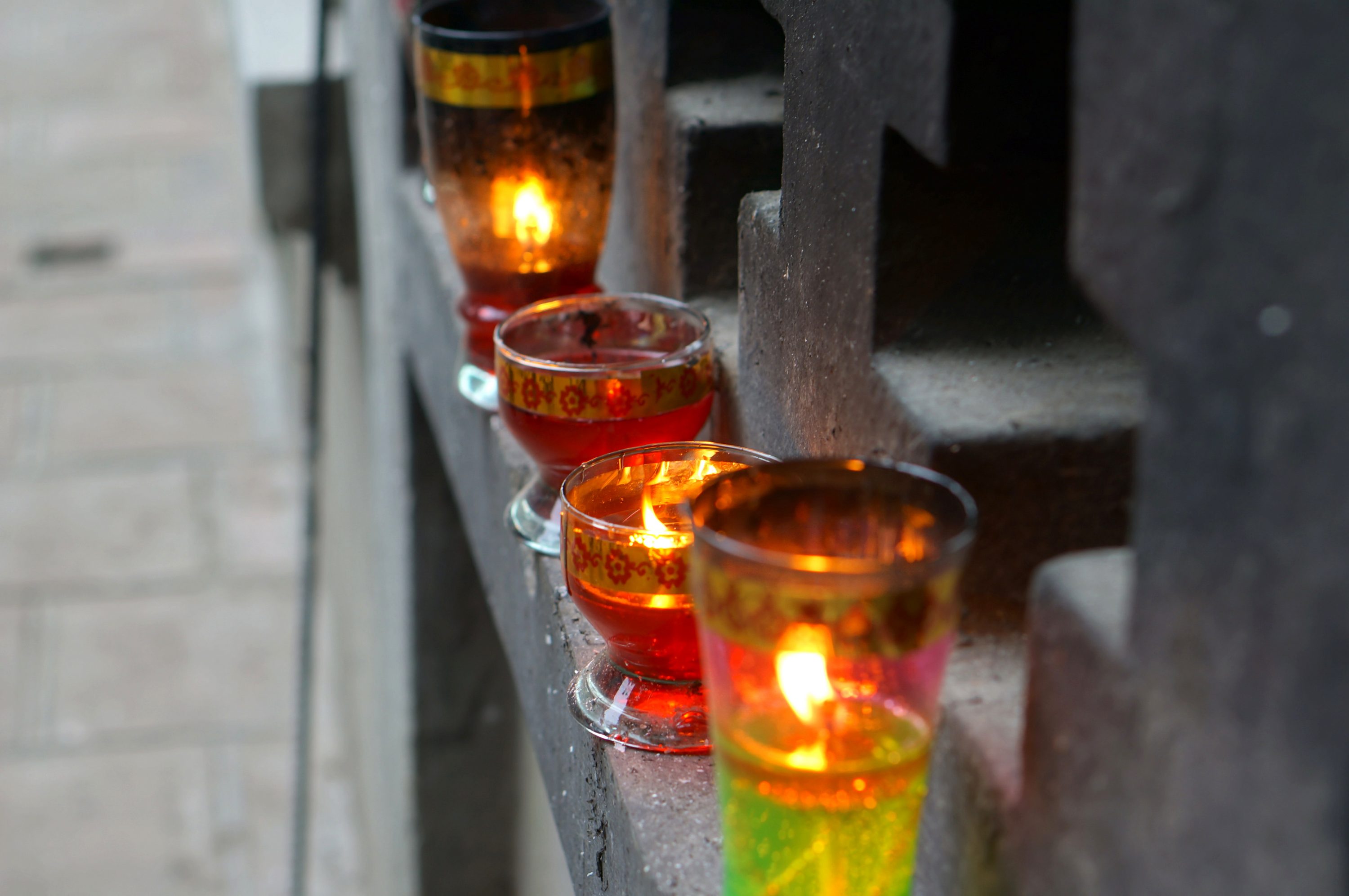
Landscape and architecture of Tran Quoc Pagoda
During the Hai Ba Trung period (40 - 43), the area around the West Lake was very sparsely populated with small and medium caves hidden in forest, where rare species of animals resided.
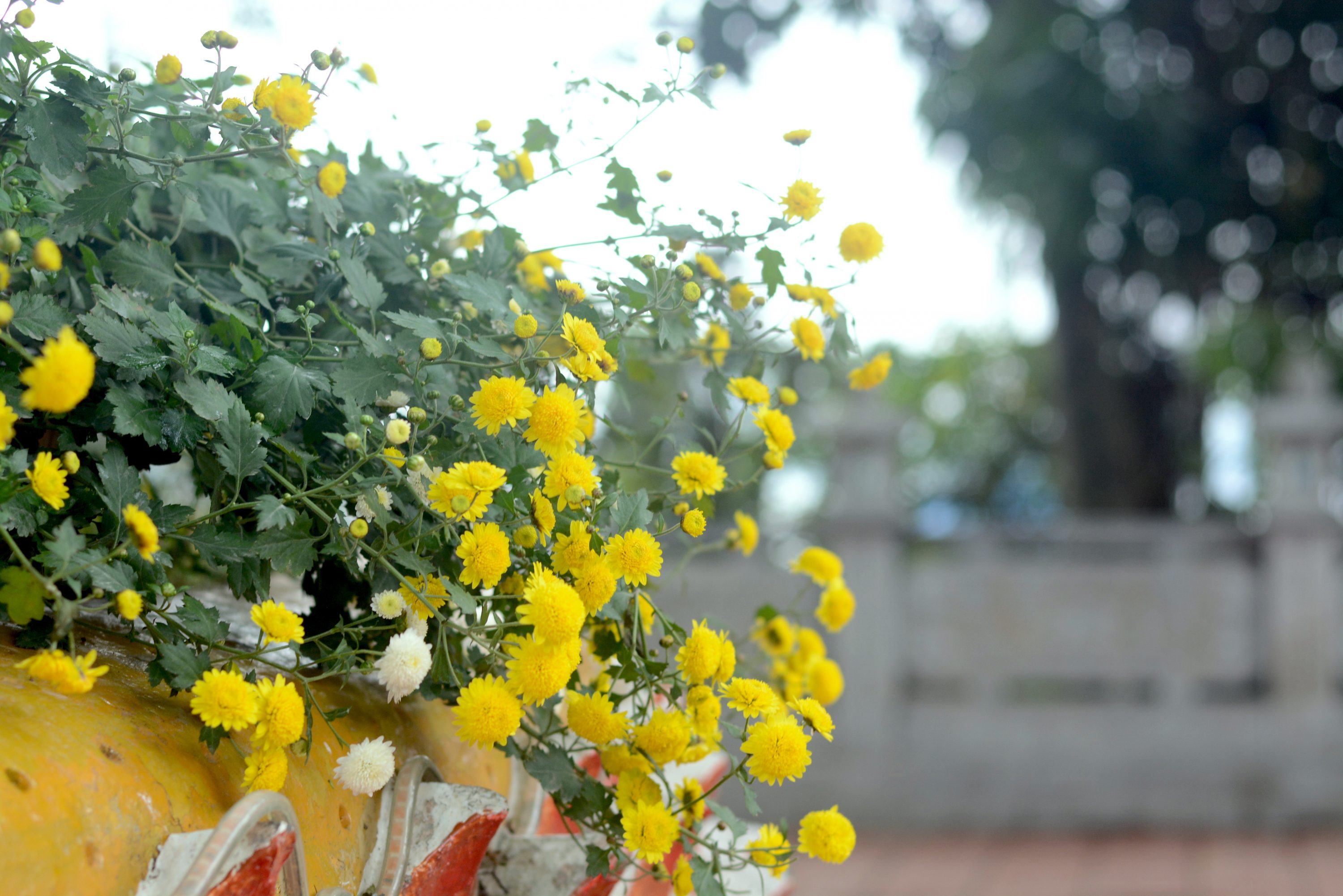
Renowned for its sacredness and magnificent scenery, Tran Quoc Pagoda was often the place where kings would visit to worship on full moon days or during Tet holiday. Especially during the Ly and Tran dynasties, many palaces were built here simply for the relaxation of the king, such as Thuy Hoa and Ham Nguyen palaces.The lords of Trinh turned this place into a royal step-over place (the residence of the king when stepping down from kingship). However, at the end of the Trinh Lords, King Le Chieu Thong ordered the burning of all sites built by Lord Trinh. Thanks to the protection of the people in the ward, Le's soldiers only burned rooms built on rafts around the temple for the eunuchs and maids, while the temple itself remained intact.
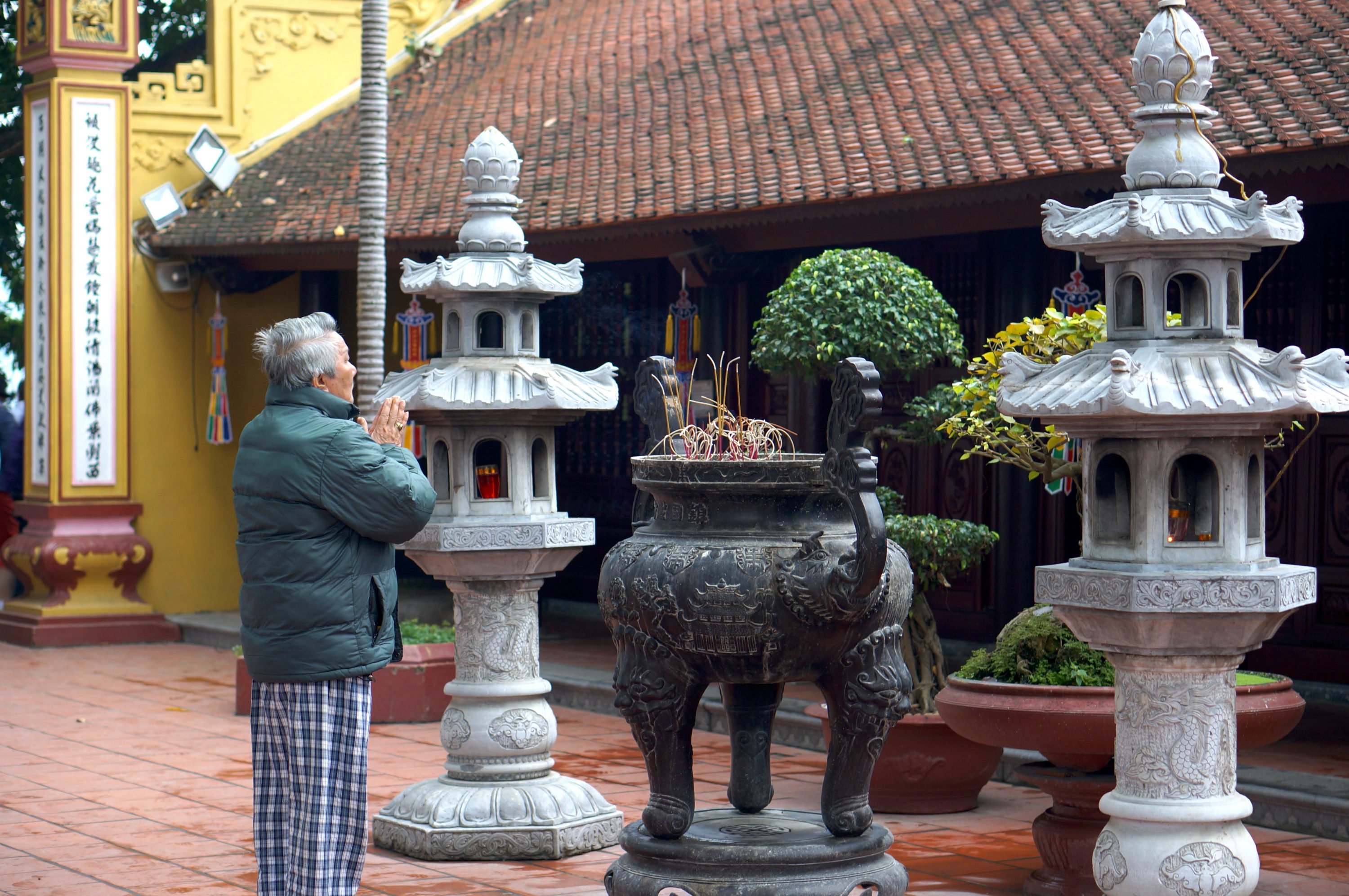
Like most of temples in Vietnam, the structure and interior of Tran Quoc Pagoda are arranged in strict accordance with Buddhist principles. Consisting of several houses and three main houses, including Tien Duong (The forecourt), Thuong Dien (The front-worshipping room), Nha thieu huong (The incense burning house), all connected in the shape of the word “Cong” (工).Gac Chuong (The steeple) is behind the front-worshipping room. The steeple is a three-story house with a matched roof, located on the road to the main hall.

The pagoda’s campus features Bao Thap Luc Do Dai Sen (The Precious Stupa), which was built in 1998. Each floor has six arched doorways with a statue of Buddha Amitabha made of precious stones. The top of the tower has a nine-story lotus called the Cuu Pham Lien Hoan.
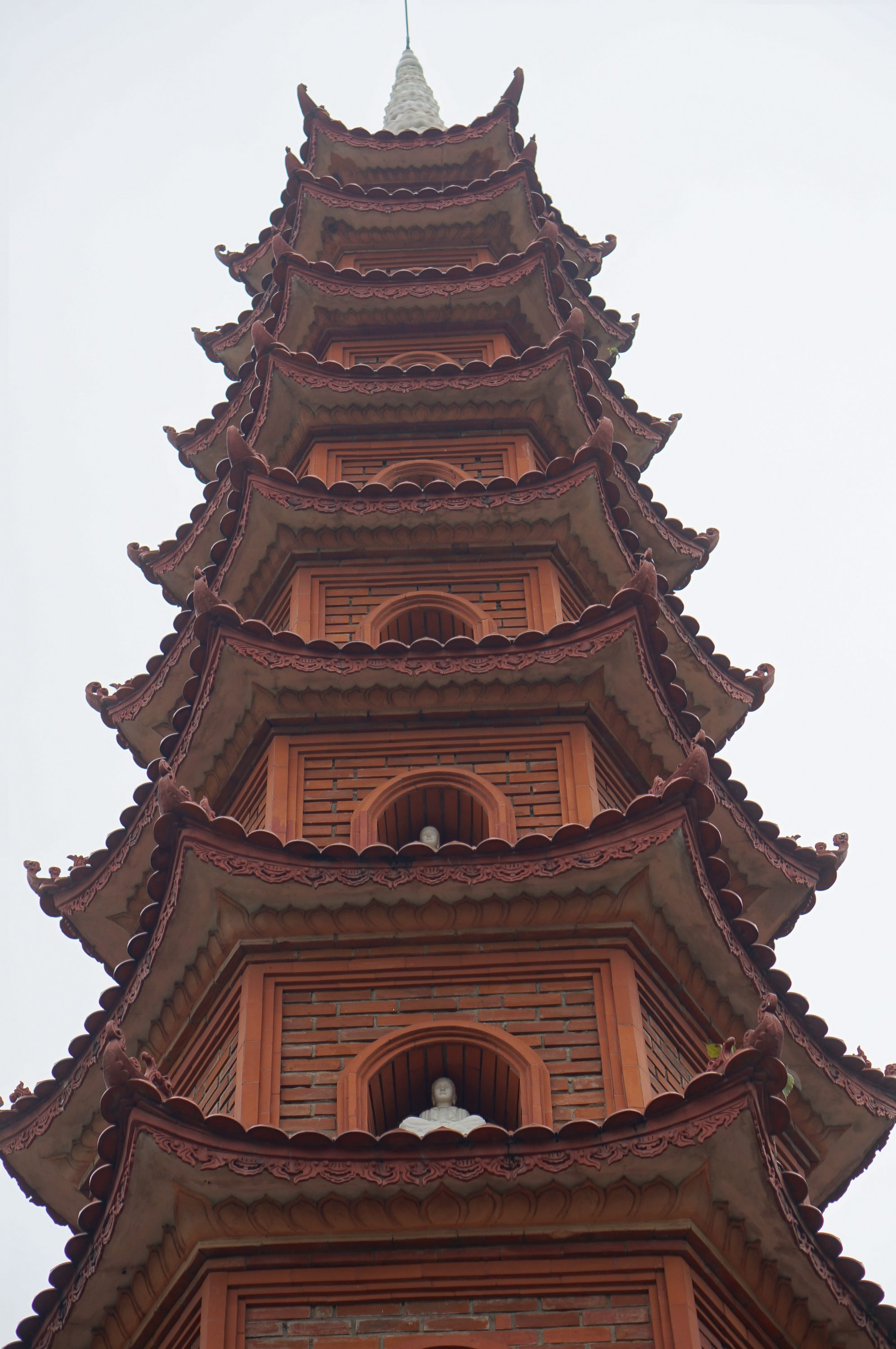
The stupa was built symmetrically with the great bodhi tree donated by the President of India when he visited Hanoi in 1959. This bodhi tree is the first descendant of the Bodhi tree in Bodh Gaya, Bihar, India, where the Buddha was fully enlightened after 49 days of meditation. Over 2500 years, the Bodhi Tree is still beautiful with shiny green leaves, attracting millions of visitors from all over the world.
The mark of religion and history

This ancient temple still preserves a lot of valuable objects such as statues worship in the upper room. These statues are meticulously crafted, carefully elaborated to have their own unique features. The statue of Shakyamuni entering Nirvana, the most remarkable Buddhism symbol, is considered as the most beautiful Nirvana statue in Vietnam.
How to get to Tran Quoc Pagoda?

It takes about 15 to 20 minutes by car from the center of Hanoi, about 4km. Unfortunately, It is not easy to use the bus to get there. Although the bus stop is in front of the pagoda’s gate, local people find it difficult to use this public transport because the route requires two buses. Taking a taxi or Uber might be the easiest way to visit the spiritual pagoda. However, visiting the pagoda on your own means you might miss numerous insights about Tran Quoc pagoda. Another option: You can take a motorcycle to this historic and religious pagoda with Inspitrip's local guides, who can provide tons of interesting facts not only about the pagoda or other famous places but also about Hanoi and its culture. The tour guides will also take care of your group, especially your stomachs with best foods of the citadel. Now, download the map of Hanoi Old Quarter including things to do and what to eat for your trip here: Link